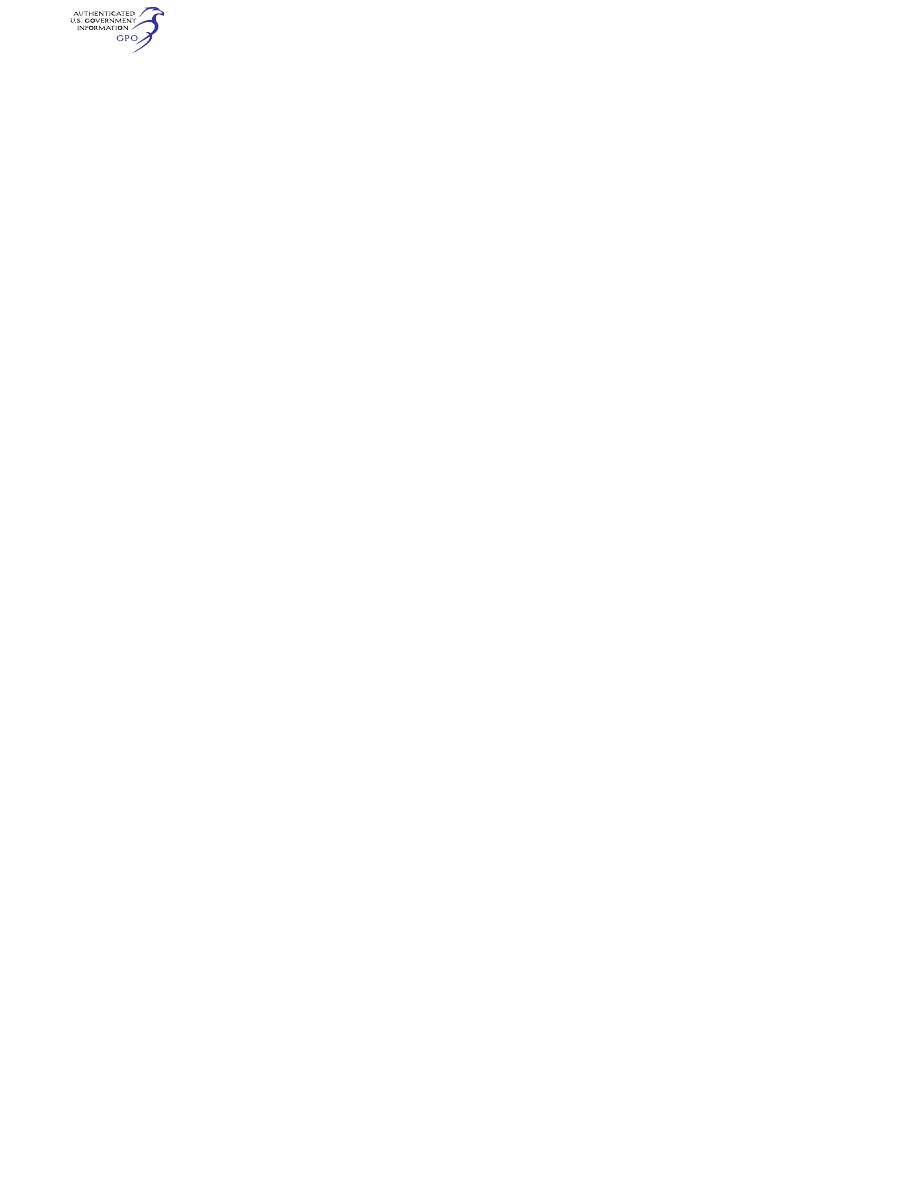
509
Federal Aviation Administration, DOT
§ 135.415
(b) Each certificate holder who main-
tains its aircraft under § 135.411(a)(2)
shall—
(1) Perform the maintenance, preven-
tive maintenance, and alteration of its
aircraft, including airframe, aircraft
engines, propellers, rotors, appliances,
emergency equipment and parts, under
its manual and this chapter; or
(2) Make arrangements with another
person for the performance of mainte-
nance, preventive maintenance, or al-
teration. However, the certificate hold-
er shall ensure that any maintenance,
preventive maintenance, or alteration
that is performed by another person is
performed under the certificate hold-
er’s manual and this chapter.
§ 135.415 Service difficulty reports.
(a) Each certificate holder shall re-
port the occurrence or detection of
each failure, malfunction, or defect in
an aircraft concerning—
(1) Fires during flight and whether
the related fire-warning system func-
tioned properly;
(2) Fires during flight not protected
by related fire-warning system;
(3) False fire-warning during flight;
(4) An exhaust system that causes
damage during flight to the engine, ad-
jacent structure, equipment, or compo-
nents;
(5) An aircraft component that
causes accumulation or circulation of
smoke, vapor, or toxic or noxious
fumes in the crew compartment or pas-
senger cabin during flight;
(6) Engine shutdown during flight be-
cause of flameout;
(7) Engine shutdown during flight
when external damage to the engine or
aircraft structure occurs;
(8) Engine shutdown during flight due
to foreign object ingestion or icing;
(9) Shutdown of more than one en-
gine during flight;
(10) A propeller feathering system or
ability of the system to control over-
speed during flight;
(11) A fuel or fuel-dumping system
that affects fuel flow or causes haz-
ardous leakage during flight;
(12) An unwanted landing gear exten-
sion or retraction or opening or closing
of landing gear doors during flight;
(13) Brake system components that
result in loss of brake actuating force
when the aircraft is in motion on the
ground;
(14) Aircraft structure that requires
major repair;
(15) Cracks, permanent deformation,
or corrosion of aircraft structures, if
more than the maximum acceptable to
the manufacturer or the FAA; and
(16) Aircraft components or systems
that result in taking emergency ac-
tions during flight (except action to
shut-down an engine).
(b) For the purpose of this section,
during flight
means the period from the
moment the aircraft leaves the surface
of the earth on takeoff until it touches
down on landing.
(c) In addition to the reports required
by paragraph (a) of this section, each
certificate holder shall report any
other failure, malfunction, or defect in
an aircraft that occurs or is detected at
any time if, in its opinion, the failure,
malfunction, or defect has endangered
or may endanger the safe operation of
the aircraft.
(d) Each certificate holder shall sub-
mit each report required by this sec-
tion, covering each 24-hour period be-
ginning at 0900 local time of each day
and ending at 0900 local time on the
next day, to the FAA offices in Okla-
homa City, Oklahoma. Each report of
occurrences during a 24-hour period
shall be submitted to the collection
point within the next 96 hours. How-
ever, a report due on Saturday or Sun-
day may be submitted on the following
Monday, and a report due on a holiday
may be submitted on the next work-
day.
(e) The certificate holder shall trans-
mit the reports required by this section
on a form and in a manner prescribed
by the Administrator, and shall include
as much of the following as is avail-
able:
(1) The type and identification num-
ber of the aircraft.
(2) The name of the operator.
(3) The date.
(4) The nature of the failure, mal-
function, or defect.
(5) Identification of the part and sys-
tem involved, including available infor-
mation pertaining to type designation
of the major component and time since
last overhaul, if known.

510
14 CFR Ch. I (1–1–24 Edition)
§ 135.417
(6) Apparent cause of the failure,
malfunction or defect (e.g., wear,
crack, design deficiency, or personnel
error).
(7) Other pertinent information nec-
essary for more complete identifica-
tion, determination of seriousness, or
corrective action.
(f) A certificate holder that is also
the holder of a type certificate (includ-
ing a supplemental type certificate), a
Parts Manufacturer Approval, or a
Technical Standard Order Authoriza-
tion, or that is the licensee of a type
certificate need not report a failure,
malfunction, or defect under this sec-
tion if the failure, malfunction, or de-
fect has been reported by it under § 21.3
or § 37.17 of this chapter or under the
accident reporting provisions of 49 CFR
part 830 of the regulations of the Na-
tional Transportation Safety Board.
(g) No person may withhold a report
required by this section even though
all information required by this section
is not available.
(h) When the certificate holder gets
additional information, including in-
formation from the manufacturer or
other agency, concerning a report re-
quired by this section, it shall expedi-
tiously submit it as a supplement to
the first report and reference the date
and place of submission of the first re-
port.
[Doc. No. 16097, 43 FR 46783, Oct. 10, 1978, as
amended by Amdt. 135–102, 70 FR 76979, Dec.
29, 2005; Doc. No. FAA–2022–1355; Amdt. Nos.
135–143; 87 FR 75848, Dec. 9, 2022]
§ 135.417 Mechanical interruption
summary report.
Each certificate holder shall mail or
deliver, before the end of the 10th day
of the following month, a summary re-
port of the following occurrences in
multiengine aircraft for the preceding
month to the responsible Flight Stand-
ards office:
(a) Each interruption to a flight, un-
scheduled change of aircraft en route,
or unscheduled stop or diversion from a
route, caused by known or suspected
mechanical difficulties or malfunctions
that are not required to be reported
under § 135.415.
(b) The number of propeller
featherings in flight, listed by type of
propeller and engine and aircraft on
which it was installed. Propeller
featherings for training, demonstra-
tion, or flight check purposes need not
be reported.
[Doc. No. 16097, 43 FR 46783, Oct. 10, 1978, as
amended by Amdt. 135–60, 61 FR 2616, Jan. 26,
1996; Docket FAA–2018–0119, Amdt. 135–139, 83
FR 9175, Mar. 5, 2018]
§ 135.419 Approved aircraft inspection
program.
(a) Whenever the Administrator finds
that the aircraft inspections required
or allowed under part 91 of this chapter
are not adequate to meet this part, or
upon application by a certificate hold-
er, the Administrator may amend the
certificate holder’s operations speci-
fications under § 119.51, to require or
allow an approved aircraft inspection
program for any make and model air-
craft of which the certificate holder
has the exclusive use of at least one
aircraft (as defined in § 135.25(b)).
(b) A certificate holder who applies
for an amendment of its operations
specifications to allow an approved air-
craft inspection program must submit
that program with its application for
approval by the Administrator.
(c) Each certificate holder who is re-
quired by its operations specifications
to have an approved aircraft inspection
program shall submit a program for ap-
proval by the Administrator within 30
days of the amendment of its oper-
ations specifications or within any
other period that the Administrator
may prescribe in the operations speci-
fications.
(d) The aircraft inspection program
submitted for approval by the Adminis-
trator must contain the following:
(1) Instructions and procedures for
the conduct of aircraft inspections
(which must include necessary tests
and checks), setting forth in detail the
parts and areas of the airframe, en-
gines, propellers, rotors, and appli-
ances, including emergency equipment,
that must be inspected.
(2) A schedule for the performance of
the aircraft inspections under para-
graph (d)(1) of this section expressed in
terms of the time in service, calendar
time, number of system operations, or
any combination of these.
(3) Instructions and procedures for
recording discrepancies found during

